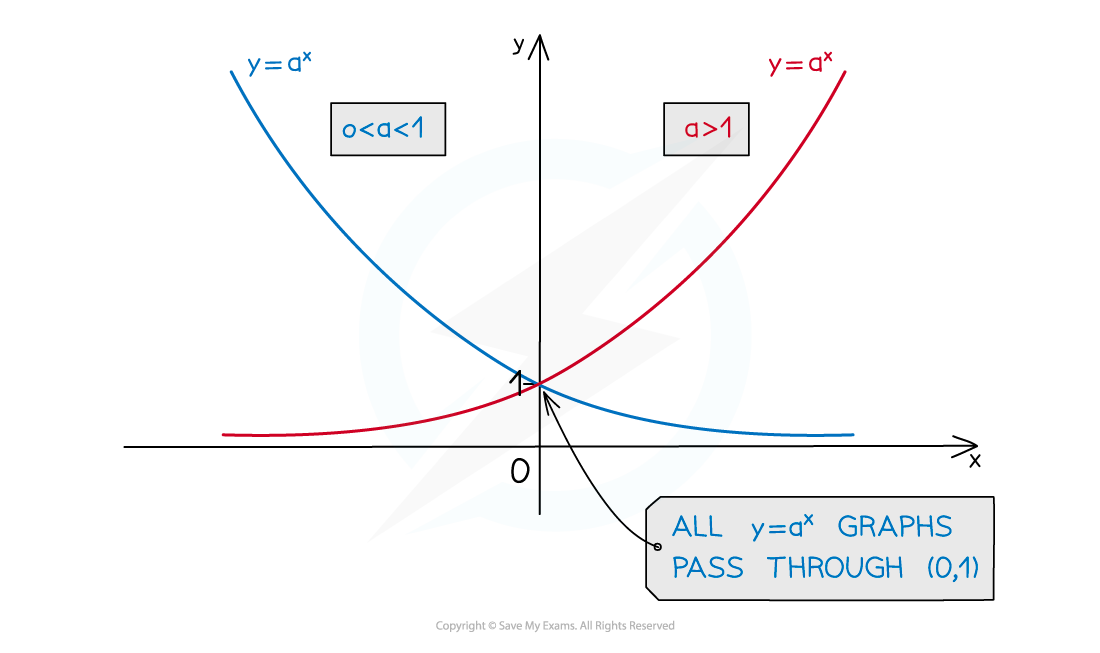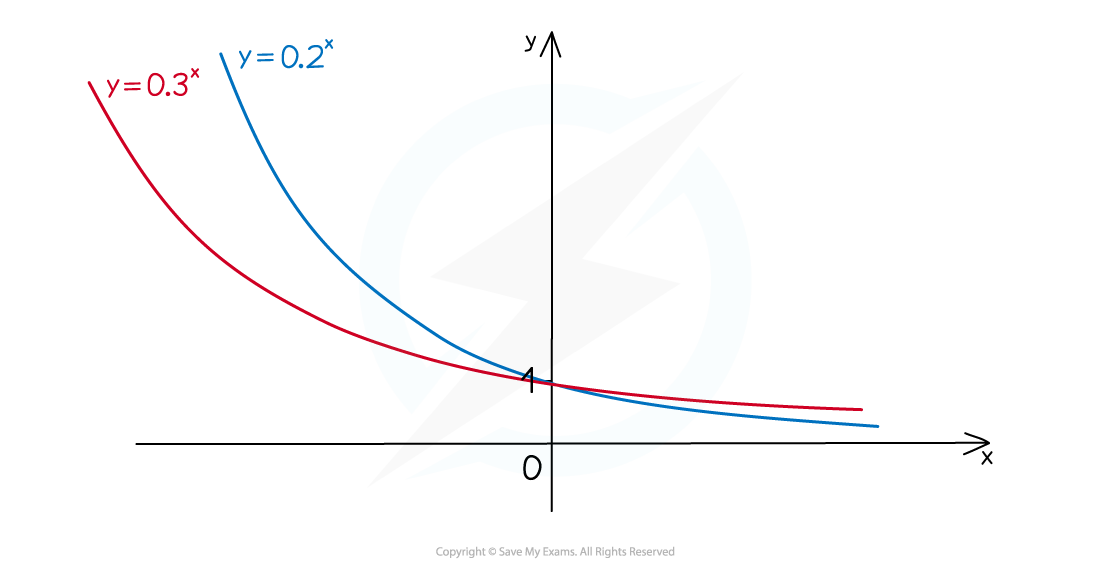Shapes of Exponential Graphs (AQA Level 3 Mathematical Studies (Core Maths)) : Revision Note
Shapes of Exponential Graphs
What is an exponential?
An exponential is a function where the power is a variable, usually
is an example of an exponential
You may encounter exponentials in either of the following forms
Where
is a positive rational number, and
is a variable
All of the following are examples of exponentials
What does an exponential graph look like?
A graph of the form
where
is positive and larger than 1 will be increasing as
increases
is increasing
A graph of the form
where
is positive and larger than 1 will be decreasing as
increases
is decreasing
If
is between 0 and 1, then the opposite is true
is decreasing
is increasing
The
-intercept of
and
will be
You can show this by substituting
into the equation
Substituting
into
or
will reduce both to
The graphs do not cross the
-axis anywhere
Exponential graphs do not have any minimum or maximum points
They are either always increasing, or always decreasing



How can I find the equation of an exponential graph?
You may be given one or two co-ordinates that lie on a curve, and an approximate form for the equation of the graph
E.g.
or
Remember that all co-ordinates on the curve must satisfy the equation
You can therefore substitute each coordinate into the given equation, and solve to find any unknown constants
Worked Example
is a curve with an equation of the form
where
is a positive constant.
passes through the point (3, 125).
Find the value of when
.
The value of can be found by substituting the coordinate (3,125) into the equation
Solve to find
Use laws of indices to rewrite the right hand side of the equation
Multiply both sides by , and divide both sides by 125
Cube root to find
So the equation of curve is
Find the value of when
78 125

You've read 0 of your 5 free revision notes this week
Unlock more, it's free!
Did this page help you?

